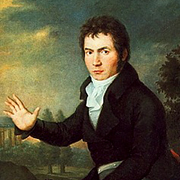The source material for Beethoven’s 3rd Piano Concert in C minor op. 37 is challenging because the autograph manuscript of the piano part has not survived. Jonathan Del Mar presents a convincing new edition, carefully considering all the details.
In one respect, the Third is the most unfortunate of all Beethoven’s iconic piano concertos: – it is only one for which we possess no authentic manuscript for the solo part. The autograph score survives, in the Staatsbibliothek zu Berlin; but only the orchestral parts are definitive. The piano staves contain some of Beethoven’s first thoughts, often with no sign of any revision even approaching the final version. Later, when preparing the work for publication, he used the autograph almost as a sketch-pad in which he plays with many different ideas of which the last sometimes comes close to what was published, but is rarely anything that could be read as definitive. Articulation, dynamics and pedal markings are almost without exception absent throughout. For Beethoven’s final solo part we are reliant on the first edition, published in 1804, Clearly he took enormous trouble over this, and it is in general impressively accurate, plate corrections witness to the care with which slurs and pedal markings were placed in order to be consistent and unambiguous.
As always with Beethoven, a thorough examination of the autograph reveals slurs, dynamics, even notes that have been hitherto overlooked, and a dozen wrong notes in the orchestral parts have been corrected for the first time since Beethoven’s lifetime. A controversial element in the most recent urtext edition was the addition of two timpani passages in the first movement that has previously been absent; it is now shown that although they are indubitably present in the autograph, they were revoked by Beethoven prior to publication, and the old Breitkopf edition was correct all along.
But although some problems have been solved in the new edition, others will always remain a matter of judgement in which the decision might have gone the other way; and the Critical Commentary, as always, gives a list of those places in which the reading Beethoven finally intended is not a matter of certainty, so that the performer has the option of selecting the reading he or she prefers.
Jonathan Del Mar
(from [t]akte 1/2014)



